by Janis Blackschleger, April 9, 2014
Jacob van Ruisdael was able to create a poetic and sometimes brooding or tragic mood in his landscapes, and particularly excelled in the painting of cloudscapes.
The Windmill at Wijk bij Duurstede, courtesy of Rijksmuseum
"The windmill rises up majestically, defying the dark rain clouds and overshadowing the castle and the church of Wijk bij Duurstede. The River Lek flows in the foreground.
This painting is world famous, and rightly so. In this impressive composition, Ruisdael united all the typical Dutch elements – the low-lying land, the water and the expansive sky – manipulating them to converge on the equally characteristic Dutch watermill." – Rijksmuseum
Jacob Isaacksz. van Ruisdael, c.1668 - c.1670, Rijksmuseum, Amsterdam
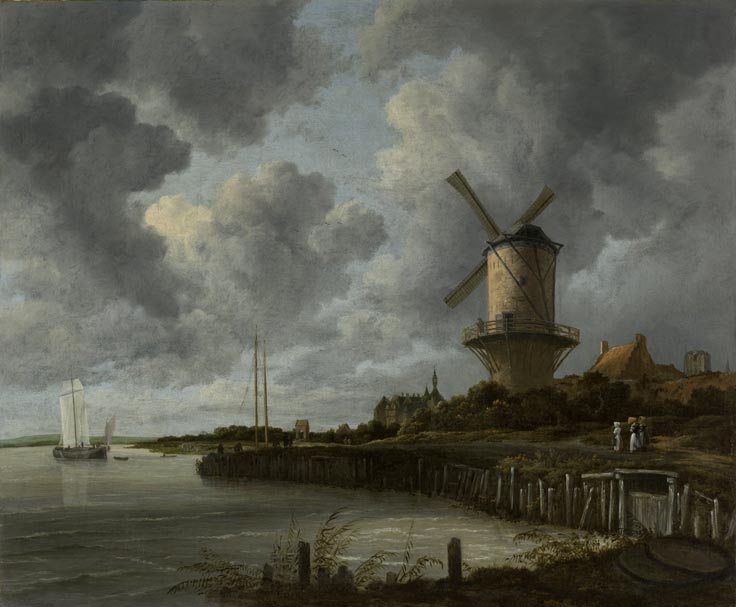
“Van Ruisdael was one of the most famous landscape painters of 17th-century Holland's Golden Age, and the foremost exponent of the classical phase of Dutch landscape painting.”
View of Haarlem from the Northwest, with the Bleaching Fields in the Foreground, courtesy of Rijksmuseum
"Foreigners experience the flat Dutch landscape as having a straight, low horizon extending under a vast sky with billowing cumulus clouds.
This is how Ruisdael painted the Haarlem skyline in the distance, recognizable by the high roof of St Bavo’s. Lengths of cloth bleaching in the sun lie at the foot of the dunes in the foreground. The Haarlem linen industry relied on the pure dune water." – Rijksmuseum
Jacob Isaacksz. van Ruisdael, c. 1650 - c.1682, Rijksmuseum, Amsterdam
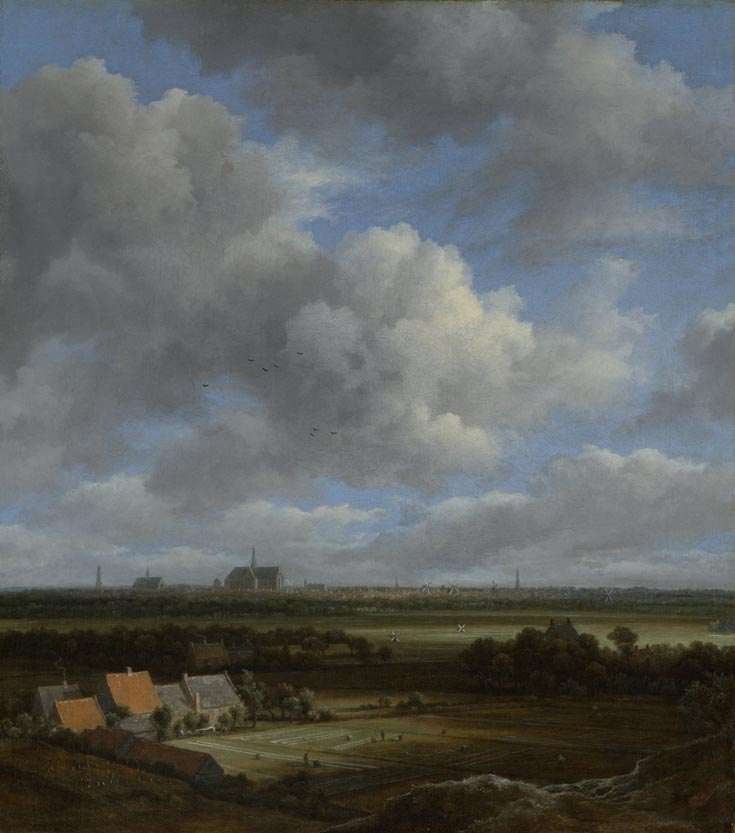
"Other artists of the time emphasized Holland’s big skies, but it was Ruisdael, whose cloudscapes show a world reduced to its essentials, who produced definitive images of his country’s famous flatness,” Art historian and Dutch art scholar Seymour Slive.
The Shore at Egmond-aan-Zee, c. 1675, courtesy of The National Gallery
"Egmond-aan-Zee, on the north sea coast to the west of Alkmaar, can be identified by its church (on the right of the picture), which survived until 1743, when it was engulfed by the sea.
The painting is primarily a study of the natural forces of sea and sky, water and waves contrasted with the grey and white cloud formations.
The figures, which are more prominent than is usual in van Ruisdael's work, may be by the Amsterdam painter, Gerard van Battem (1636 - 1684). Though mainly a specialist in landscapes, van Ruisdael also painted a number of seascapes and beach scenes." – The National Gallery, London
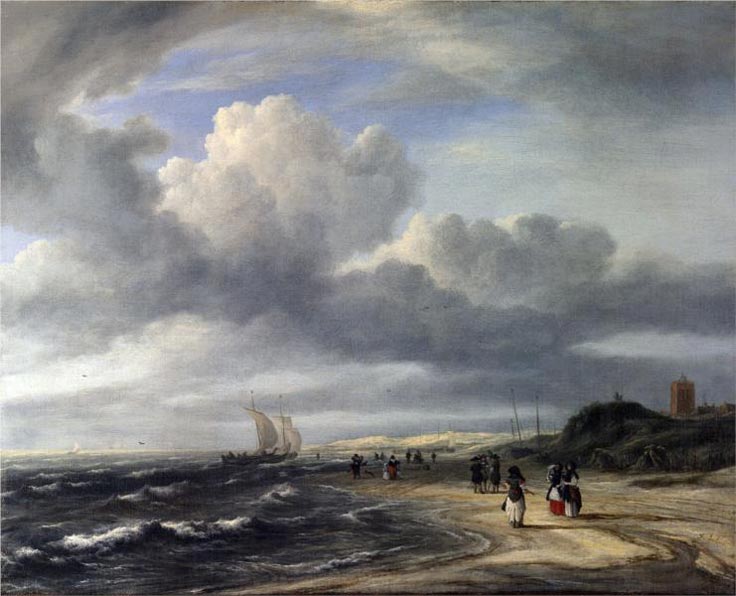
"With cloud-filled skies taking up most of the pictures, Ruisdael seems to be asking, like a twentieth-century abstractionist, how little of the dark earth he needs at the bottom of his painting to balance above it a vast sky."
Landscape with Waterfall, courtesy of Rijksmuseum
"The composition is dominated by gnarled trees, barren tree trunks, and roiling water.
The dramatic cycle of nature’s birth and decay is almost tangible. Ruisdael's compositions are often more imposing than reality. A church tower rises up in the distance like a beacon of peace." – Rijksmuseum
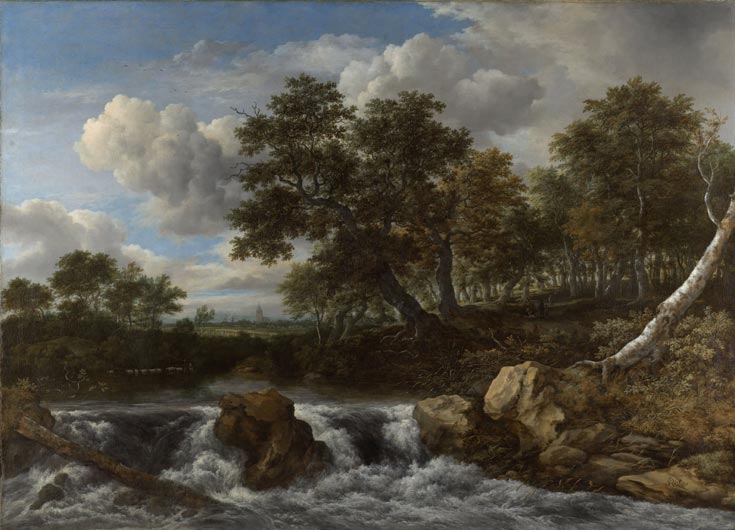
Landscape with a Wheatfield, courtesy of The Getty Museum
"In a poetic, yet convincing manner, Jacob van Ruisdael captured the changing effects of light passing through clouds and the play of sunlight and shadow across the earth.
He contrasts the uncut wheat in the field and the newly bound sheaves on the right, the broad expanse of blue sky above and the low, yellow fields below. Dwarfed by their surroundings, the small figures convey the insignificance of humanity in the face of nature." – The Getty Museum
You can see larger, super high quality digital renditions, and more Jacob van Ruisdael cloudscapes, in the museums' collections using this link: Jacob van Ruisdael, late 1650's - early 1660's, The Getty Museum, Los Angeles e.
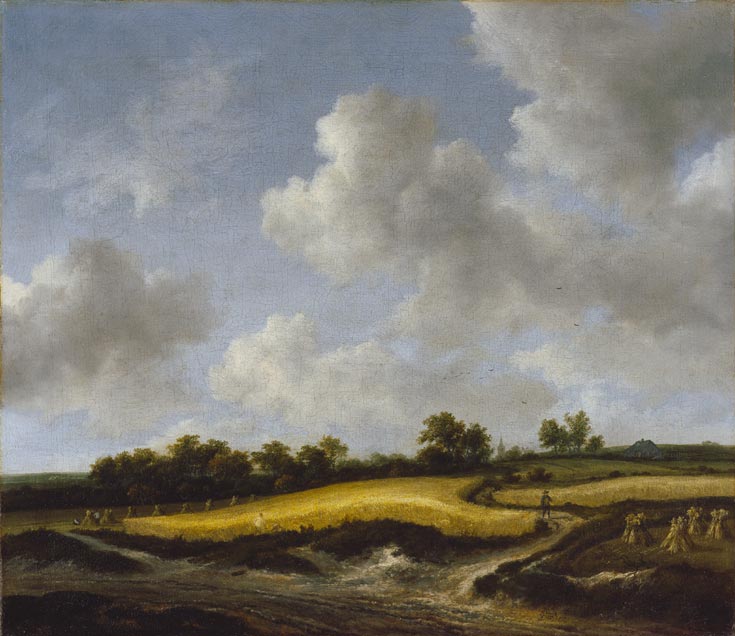
”Who watched the forms of the clouds over this part of the Earth
a thousand years ago?
Who watches them today?”
— Henry David Thoreau
Stormscapes
Photography by & © MITCH DOBROWNER
Fine Art Photographer Mitch Dobrowner
sees the storms across America’s storied landscapes as:
“living breathing things. They are an amazing sight to witness . . . born when the conditions are right, they gain strength as they grow, they fight against their environment to stay alive . . .”
Mitch Dobrowner for The New York Times: What’s Going on Inside the Fearsome Thunderstomes of Córdoba Province?” by Noah Gallagher, July 22, 2020
Scientists are studying the extreme weather in northern Argentina to see how it works
— and what it can tell us about the monster storms in our future.
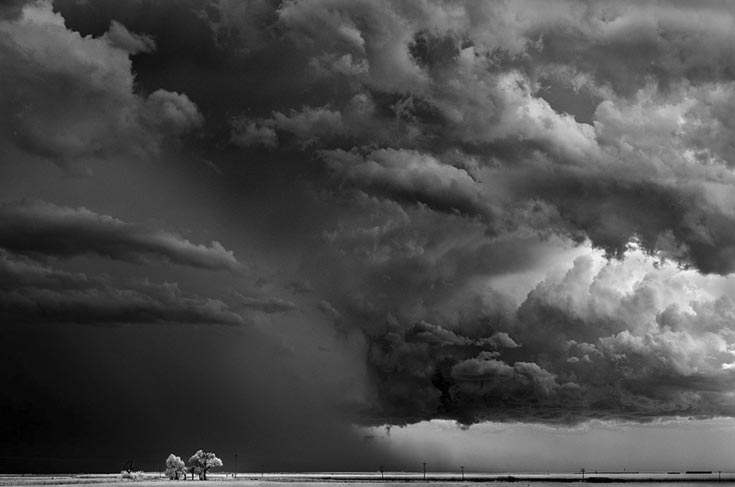
If there is such a thing as sky jazz,
Photographer and Visual Effects Artist Rufus Blackwell has created it.
His amazing time lapse video dances through glorious clouds —
cloudscapes, sunrises and sunsets miles high in the sky —
until returning to earth in the night.
SKYLAPSE - AN ARIEL HYPER-LAPSE from Rufus Blackwell